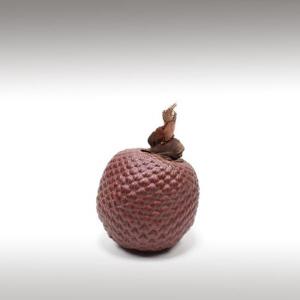
BURITI FRUIT OIL (MAURITIA FLEXUOSA) - BASE OILS

BASE / GENERAL DATA
Information submited: August 1, 2014 Modified: April 3, 2018 By: OperaDreamhouse
Mauritia Flexuosa, known as the Moriche palm, Ité palm, Ita, Buriti, Canangucho (Colombia), or Aguaje (Peru), is a palm tree. It grows in and near swamps and other wet areas in tropical South America. It has been reported from Trinidad, Colombia, Venezuela, Guyana, Suriname, French Guinea, Brazil, Ecuador, Peru and Bolivia.
Mauritia Flexuosa is an elegant tree which can reach up to 35 meters in height. The large leaves form a rounded crown. The fruit, which grows from December to June, is a chestnut colour and is covered with shiny scales. The yellow flesh covers a hard, oval, nut. The seeds float, and this is the means by which the palm tree propagates.
Moriche palm fruit is edible, has a high Vitamin C content, and used to make juice, jam, ice cream, and a fermented "wine". An oil high in Vitamin A is extracted from the pulp and is frequently used to treat burns because of its soothing qualities. Buriti oil is an orange-reddish oil extracted from the fruit of the moriche palm. The oil contains high concentrations of oleic acid, tocopherols and carotenoids, especially Beta Carotene.
Buriti fruit oil is considered to be one of the richest sources of beta-carotene, with levels exceeding that of carrot seed oil. Brasilian natives treat the buriti tree as sacred because it contains the nutrients and support needed to sustain life.
The Buriti oil is very rich in oleic acid (72,5%), a type of mono-unsaturated fatty acid that is abundant in Olive oil.
Approximately 60 female and 80 male buriti palms occur in one hectare. An adult palm can produce up to 200 kg of fruit, which can be processed into 30 kg of flour or 5 to 6 liters of finally extracted oil (the flour contains 22% oil). Assuming an average of 60 buriti palms per hectare, 300 to 360 liters of oil can be extracted per hectare. The reproductive cycle occurs every two years.
Mauritia Flexuosa is an elegant tree which can reach up to 35 meters in height. The large leaves form a rounded crown. The fruit, which grows from December to June, is a chestnut colour and is covered with shiny scales. The yellow flesh covers a hard, oval, nut. The seeds float, and this is the means by which the palm tree propagates.
Moriche palm fruit is edible, has a high Vitamin C content, and used to make juice, jam, ice cream, and a fermented "wine". An oil high in Vitamin A is extracted from the pulp and is frequently used to treat burns because of its soothing qualities. Buriti oil is an orange-reddish oil extracted from the fruit of the moriche palm. The oil contains high concentrations of oleic acid, tocopherols and carotenoids, especially Beta Carotene.
Buriti fruit oil is considered to be one of the richest sources of beta-carotene, with levels exceeding that of carrot seed oil. Brasilian natives treat the buriti tree as sacred because it contains the nutrients and support needed to sustain life.
The Buriti oil is very rich in oleic acid (72,5%), a type of mono-unsaturated fatty acid that is abundant in Olive oil.
Approximately 60 female and 80 male buriti palms occur in one hectare. An adult palm can produce up to 200 kg of fruit, which can be processed into 30 kg of flour or 5 to 6 liters of finally extracted oil (the flour contains 22% oil). Assuming an average of 60 buriti palms per hectare, 300 to 360 liters of oil can be extracted per hectare. The reproductive cycle occurs every two years.

SPIRITUAL PRACTISES DATA

MEDICINE / HEALTH DATA

BEAUTY / COSMETICS DATA

FOOD / COOKING DATA
COMMENTS
No comments.
Newest mixtures containing Buriti Fruit Oil (Mauritia Flexuosa):

Home made Golden milk
May 12, 2015


